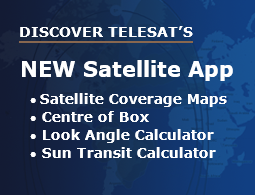Recently, a new report from the Defense Science Board (DSB), a group of civilian experts commissioned to advise DoD leadership, called for increased adoption of commercial space technologies to bolster U.S. military capabilities. The DSB, chaired by industry executive Mandy Vaughn and retired U.S. Air Force General Ellen Pawlikowski, focused on the rapidly evolving space sector and the need for the DoD to incorporate commercial advancements into its military architecture.
Space has undergone a seismic shift from nation-states operating spacecraft to a vibrant and global commercial market. The rapid advancement of commercial capabilities has blurred the lines between military and commercial missions. The potential benefits of incorporating commercial activity, such as increased innovation and cost-effectiveness, far outweigh the risks of inaction in the face of escalating space development from near-peer adversaries.
Specific recommendations from the DSB report include:
- Incentivizing trust and building resilience among commercial providers
- Developing capabilities to monitor and respond to adversary use of commercial space assets
- Considering market maturity when making an investment, regulation, or procurement decisions
- Incorporating evaluations of commercial space services into institutional processes
- Implementing an end-to-end framework for integrating commercial capabilities into national security space architectures
This report is a crucial call to action. It follows the release of strategy documents by the DoD and the Space Force focused on incorporating commercial technology in space. Of course, stating a new strategy is just the beginning of affecting change. “Culture eats strategy for breakfast,” as the famous management consultant Peter Drucker put it.
The DSB report acknowledges this challenge and emphasizes that the current definition of “inherently governmental” is overly broad, has hindered the adoption of commercial technology, and needs to be redefined. It would be a significant and positive step forward if the DoD not only heeds these recommendations but also takes immediate action to redefine inherently government functions in space – determining what the Government needs to retain full ownership of versus what commercial technology can deliver better, faster, and more economically.
The DSB recognized that the term commercial space covers a broad spectrum, which they organized into four elements:
Commercial Innovation – incorporating market-based ideas into DoD activities such as SpaceWERX and AFWERX.
Commercial Development – using commercial components in bespoke DoD systems, such as Space Development Agency’s proliferated LEO constellation.
Commercial Products – near off-the-shelf commercial systems tailored to DoD’s specific needs, such as WGS.
Commercial Services – capabilities purchased from commercial providers with little direct control over the capabilities by DoD – examples given here were launch and SATCOM connectivity.
Interestingly, the pace of commercial innovation may have exceeded some of the categorical definitions. For example, Telesat Lightspeed, our next-generation low-earth-orbit (LEO) constellation, fits in the Commercial Development category rather than Commercial Products. DoD has great control over how they can integrate it into their mission in space.
Telesat’s system architecture and cybersecurity measures established for Telesat Lightspeed present compelling capabilities for government users. Telesat expects to achieve high cybersecurity classification under the U.S. Space Force Infrastructure Asset Pre-Assessment Program (IA-Pre). DoD customers can maintain this new level of commercial SATCOM security from end to end.
If required, DoD data can remain entirely within the Telesat Lightspeed constellation from source to destination, never transiting a public network and, therefore, inaccessible to an adversary who wants to monitor or exploit the data stream. Data can be uplinked from a theater of operations and transit the Telesat Lightspeed optical inter-satellite links in space to a government-owned gateway without ever touching a third-party terrestrial network. The military customer also retains total control of the data encryption and decryption process for their data sent over the Telesat Lightspeed network.
Using the DSB’s definitions, Telesat Lightspeed is a hybrid Commercial Development/Product, not simply a service for the DoD to be leveraged as is. It provides an entirely new level of functionality for a contested space environment.
The DSB notes that the U.S. government has multiple roles in space. In the new space environment, the government acts as a regulator, an investor, and a customer. Adopting the recommendations of this report will go a long way toward keeping those roles in balance. That’s the way to best leverage commercial innovation and strengthen the national space defense.




